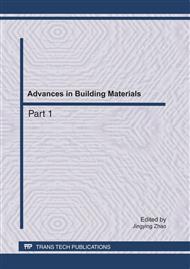p.1694
p.1699
p.1705
p.1709
p.1714
p.1719
p.1724
p.1729
p.1734
Research on the Mechanics Characteristics of Loess Tested by a New True Tri-Axial Apparatus
Abstract:
All true tri-axial experimental apparatuses are usually applied to test the mechanics characteristics of soils under complicated stress conditions. Because of the analysis of non-rationality of three kinds of chamber framework developed in past, a new true tri-axial apparatus with a new structural chamber is recently developed by the institute of geotechnical engineering, Xi’an University of Technology. The mechanical description of a new tri-axial apparatus for soil testing is presented herein. The design of new tri-axial apparatus took into the flexibility in adjusting sample size, convenience in assembling sample and easily controlling of three normal stress conditions. The stress-controlled and strain-controlled performance of experiments can be accomplished respectively in the new true tri-axial equipment, which is of a special chamber. The special chamber includes of four cells with bursa filling liquid, being corresponding to four lateral surfaces of cubic sample respectively, separated by steel clapboards. The steel clapboards can turn freely on the horizontal plane and flex in the radial direction so as to adapt to the displacement of sample corner. Through the true tri-axial testing of remolded loess and intact loess were executed on the new true tri-axial apparatus, and the characteristics of stress-strain curves for the true tri-axial tests of remolded loess and intact loess were analyzed under different intermediate principal stresses. The characteristics of the new true tri-axial apparatus are as following: structure is simple, and operation is well-suited, and stress state is real, and strain measurement is accurate, and testing process is controlled easily.
Info:
Periodical:
Pages:
1714-1718
Citation:
Online since:
May 2011
Authors:
Keywords:
Price:
Сopyright:
© 2011 Trans Tech Publications Ltd. All Rights Reserved
Share:
Citation:


